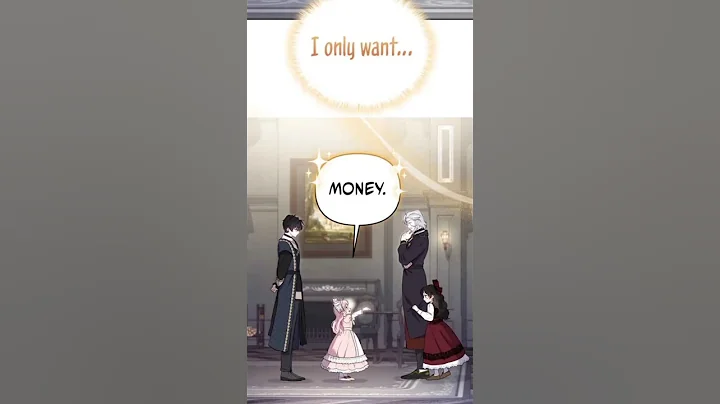In ordinary people's perception, the United States has only had presidential rotations every 4 or 8 years since the founding of the country, and has never had a dynasty, so there is no talk of dynasty change at all. But in fact, in the field of American historical research, there is also a periodization system of American history similar to dynasties. According to this system, the American political system has gone through at least 6 different periods since the founding of the United States.

Schematic diagram of the American political party system. This diagram divides the American political party system into five periods.
Since they are from different periods in American history, this period system will of course also have distinctive American characteristics. Therefore, each period of this system is basically divided by important changes in the American two-party system. Since the founding of the United States, although the two-party system has always been implemented, both the specific political parties and the connotation of political parties have actually undergone fundamental changes. These changes have led to the emergence of 6 to 7 significant political parties in American history. Different party systems, and each change is actually accompanied by a considerable degree of change in political groups, so each period can be regarded as a different dynasty in American history to a certain extent. So today we will take a look at these 6 (7) "dynasties" in American history. What are they? And why did the "change of government" in the United States happen?
The First Party System (1792 AD - 1824 AD)
Modern general opinion holds that the first two-party system in the United States was formed in 1792 AD. In this year, the first President of the United States Washington was successfully re-elected as the President of the United States without a competitor. But after that, different opposing factions quickly emerged in his government, whose leaders were Alexander Hamilton who served as Treasury Secretary in the Washington government and U.S. Congressman James Madison.

The sphere of influence of the first political party system, pink and green respectively represent the Federalist Party and the Anti-Federalist Party
One of the forces led by Hamilton hopes to establish a strong central government and central bank system, and repair relations with the United Kingdom. At the same time, it hopes that the government Maintaining close ties with the wealthy class, its faction became known as the Federalist Party.
The group led by Madison placed more emphasis on the power of the states, and at the same time paid more attention to the interests of the farmer class, and opposed excessive federalism. This group was usually called the Federalist Party because it opposed the dominant Federalist Party at the time. for the Anti-Federalist Party. However, the official name of this party was actually the Democratic-Republican Party.
After Washington’s second term began in 1792, the contradiction between the Federalist Party and the Anti-Federalist Party quickly became public. The Anti-Federalist Party, led by Madison and Thomas Jefferson, the drafter of the American Declaration of Independence, soon Quit the government and become an opposition party. The two leaders of the Federalist Party and the Anti-Federalist Party, Hamilton and Madison, were both the main authors of the important theoretical document " The Federalist Papers " of the U.S. Constitution, and both of them were in the "Federalist Papers" Severe criticism of political factionalism. But just a few years later, the two men took the lead in forming the earliest political factions in the United States, so this was later regarded as a rather ironic thing.

Jefferson's election as president marked the loss of power for the Federalist Party supported by Washington
In the early days of the first party system, the Federalist Party was nominally nonpartisan, but in fact it had a relatively large advantage with the support of Washington. But Washington died in 1799 AD. A year later, Jefferson, the main leader of the Anti-Federalist Party, was elected President of the United States. After that, the Anti-Federalist Party dominated American politics. The Federalist Party retreated to a corner of the northeastern United States. In 1812 AD, the Federalist Party openly opposed the war between the United States and Britain, which almost led to the division of the United States. After this war, the Federalist Party gradually bubbled up in the United States, and the first political party system in the United States came to an end around 1824 AD.
The Second Party System (1828 AD - 1852 AD)
After the Federalist Party gradually withered away, some former Federalists also switched to the Democratic-Republican Party.But at this time, the dominant Democratic-Republican Party soon split, and serious internal strife broke out in the U.S. election in 1824. After that, the Democratic-Republican Party quickly split into the National Republican Party, led by former Federalist John Adams, who became President of the United States, and the Democratic Party, led by the defeated Andrew Jackson.

The second political party system's sphere of influence, blue: Democratic Party, yellow: Whig Party
htmlAfter 2004, Jackson defeated Adams to become the President of the United States, and the Democratic Party became the largest party in the United States. The national Republican Party gradually disintegrated. In 1833, some former members of the national Republican Party and some members of the Democratic Party who opposed Jackson formed an alliance to form a new political party, the Whig Party. The name of the Whig Party originated from the United Kingdom. It was a political party in the United Kingdom from the late 17th to the early 18th century known for its opposition to the autocratic power of the British monarchy. Therefore, the characteristics of this American Whig are also very clear. It was the collection of all the political forces that opposed Jackson at that time.Therefore, the two factions of the second party system in the United States are the Democratic Party and the Whig Party. Because the Democratic Party was a force centered around President Jackson, the Democratic Party had strong support for the supremacy of presidential power at that time. The Whig Party, whose core idea was to oppose Jackson, naturally hoped to limit the presidential power through Congress. In addition, the Democratic Party was relatively uninterested in industrializing the United States because it would affect its main supporters, the American farmer class. Interests. In contrast, the Whig Party became the main supporter of modernizing the U.S. economy, but it also held a strong trade protectionist attitude.

The iconic figure of the second party system, Andrew Jackson
During this period, the Whig Party and the Democratic Party fought fiercely mainly around the two systems of the U.S. banking system and the party appointment system. In the end, the Democratic Party basically lost in both struggles. After winning the victory, the Second Bank of the United States, which once served as a central bank, went bankrupt under the opposition of the Democratic Party. The Democratic Party insisted on the appointment system of party members, that is, after a person comes to power, he can appoint a large number of his supporters as officials without excessive use. The system of taking their talents into account was maintained. In the 1850s, the Whig Party, which had experienced a series of failures and was riddled with internal contradictions, quickly collapsed due to serious and irreconcilable differences within the party over the existence and abolition of slavery, and the second party system in the United States came to an end.
The third party system (1854 AD - 1890s AD)
After the collapse of the Whig Party, the anti-slavery forces within the original Whig Party quickly regrouped and formed a new political party that clearly advocated the abolition of the black slave system. , that is, the Republican Party. After the birth of the Republican Party, because its advocacy of abolition was in line with the development direction of the United States at that time, it quickly overwhelmed the Democratic Party and became the dominant force in American politics.

The sphere of influence of the third party system, blue: Democratic Party, red: Republican Party
During this period, under the leadership of Abraham Lincoln and other Republican presidents, the United States defeated the southern states that advocated the retention of slavery through the Civil War (United States The Confederate States ), maintained the unity of the United States, and launched a series of modernization measures, such as establishing a series of national banks, building a large number of railways, maintaining high tariffs, distributing state-owned land at low prices or free of charge, and expanding social expenditures, etc. To a certain extent, it promoted the modernization process of the United States.

Lincoln is the iconic figure of the third party system
During this period, with the rapid advancement of industrialization, the wage level of Americans began to significantly surpass that of European countries, so it attracted a large number of immigrants from Europe to enter the United States, and a large number of immigrants The entry of foreign countries has promoted the development of the American economy, and many aspects of American society have shown prosperity. However, it was also during this period that the United States' rejection of Asians who arrived at the same time as European immigrants was rampant. In 1882, the United States passed the Chinese Exclusion Act, which strictly restricted the entry of Chinese people.In addition, after the American Civil War, the American South and southern blacks fell into serious economic difficulties. It can be said that there were also a lot of social contradictions hidden under the prosperous surface of American society at that time. Therefore, this era full of contradictions was quickly called the "Gilded Age", which represented the evaluation of some people in American society that this era was full of gold but was full of failures.

A cartoon that satirizes capital's control of the U.S. Congress at that time.
From a modern perspective, a very interesting phenomenon of this era is: under the leadership of the Republican Party, which firmly advocated the abolition of slavery, the southern states that advocated the retention of slavery were defeated, so they gained A large number of "free" southern slaves became the strongest supporters of the Republican Party. The white southerners who lost their slaveholding privileges naturally stood against the Republican Party and became the core of the Democratic Party.
The Fourth Party System (1896-1932 AD)
Among the various "dynasties" experienced in American history, the Fourth Party System can be said to have changed the least compared to the Third Party System. During this period, the major political parties and their main support groups in the United States did not change. However, with the development of industry, the northeastern region of the United States that benefited from the Republican-led industrialization process became die-hard supporters of the Republican Party, and this was further strengthened. This has given rise to the Republican Party’s advantage in American politics: in the past few decades, except for eight years, the Republican Party has been in power.

The sphere of influence of the fourth party system, blue: Democratic Party, red: Republican Party
The main difference between this period and the third party period is the profound changes in American society. American society has achieved further modernization during this period, and the U.S. government’s Domestic railroads and giant corporations introduced a series of management measures and made considerable progress in abolishing child labor and expanding women's suffrage. Therefore, this period is sometimes called the "Progressive Era" in the United States.

The Great Depression plunged a large number of Americans into poverty.
However, during this period, domestic trade protectionism prevailed in the United States and it launched a series of foreign wars, making its imperialist characteristics more prominent. By the end of the 1920s, the bubble economy represented by the Wall Street stock market had completely burst, and the United States fell into the Great Depression, the largest economic crisis in its history, which soon dragged the global economy down. As a result, the fourth party system in the United States has collapsed.
The Fifth Party System (1933-1970s)
In 1933, the Democratic Party, which had been suppressed by the Republican Party for decades, finally turned around when the United States was mired in the crisis of the Great Depression and could not extricate itself. Franklin Roosevelt quickly formed the Democratic Party formed by The New Deal alliance formed by labor unions, blue-collar workers, white southerners, farmers, and minority groups including blacks, Catholics, and Jews won the election with its support.

created the fifth party system in the 1932 election, blue: Democratic Party, red: Republican Party.
After this, American labor unions and black groups that had long supported the Republican Party switched to the Democratic camp. Major changes occurred in the American political landscape. The new fifth party system The formation of a political party system. After that, the previously relatively conservative Democratic Party began to use liberalism as its signature, while the Republican Party, which had previously been characterized by reform and progress, turned to conservatism.

The iconic figure of the fifth party system, Franklin Roosevelt
In the following 40 years, the Democratic Party basically controlled the political arena in the United States. Except for two general elections, the Democratic Party won all the U.S. presidential elections during this period, while the Republican Party fell into divisions. , the moderate faction based in the Northeast of the United States completely lost power and influence in the party after 1964.
The Sixth Party System (1970s to the present)
In 1954, the American black civil rights movement began, and in fact the apartheid system that had been implemented in the United States began to be broken.This movement finally reached its peak in 1968, although the black civil rights leader Martin Luther King Jr. and the Democratic Senator Robert F. Kennedy (the younger brother of the previously assassinated US President Kennedy) who supported the black civil rights movement were He was assassinated successively, but the black civil rights movement ultimately succeeded in prompting the abolition of apartheid in the American South.

Nixon won the election in 1968 with the "Southern Strategy"
However, this civil rights movement aroused opposition among white southern Americans who were very racist. The Republican Party, which had been suppressed by the Democratic Party for decades, began to launch an electoral strategy called the "Southern Strategy" in the 1960s. This strategy deliberately exaggerated racial conflicts for white southern Americans and fueled their dissatisfaction caused by the civil rights movement. Under the influence of this strategy, starting in the 1960s, white southern Americans who had supported the Democratic Party for 100 years began to support the Republican Party. This shift ultimately helped Republican candidate Richard Nixon win the U.S. election with an overwhelming majority in 1968, reversing the Republican Party's disadvantage against the Democratic Party in the previous decades. The sixth political party system in the United States has officially taken shape.

The 1992 U.S. election can reflect the situation of the sixth party system to a certain extent
Under the sixth party system in the United States, candidates for various elections in the United States were changed from being selected by county caucuses and state conventions to being selected by each party in Primary elections are held in various places. This change has given populism a greater influence on party politics. It has also increased the differences in the political philosophies of the two parties in the United States and accelerated the polarization of American politics. It can be said that the intensified confrontation between the two parties in the United States in recent years is also a normal result of the continuous development of this trend.
In addition, some people even believe that the political landscape of the United States has actually changed again in 2016, and since then the United States has entered the seventh party system. I believe many friends are familiar with the relevant background of this view, and this view is still relatively controversial, so this article will not go into details for the time being. Of course, due to the essential characteristics of American democracy "capital democracy", although different political forces are opposed to each other on some specific issues, they can actually all be classified into the same elite group. No matter which small group is dominant, in fact To a certain extent, they can all be seen as the manipulation techniques of the capital groups behind them, and they are just spokespersons playing different roles. (Pictures from the Internet)





















